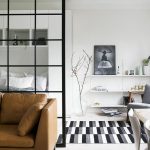In a world filled with constant noise and clutter, the beauty of modern minimalist design shines through like a breath of fresh air. Embracing the principle that less is more, minimalist design focuses on simplicity, cleanliness, and functionality. Join us as we delve into the world of modern minimalist design and explore how this aesthetic can transform any space into a peaceful sanctuary.

Introduction to Modern Minimalist Design
In the world of design, less is often more. Modern minimalist design focuses on simplicity, clean lines, and functionality. It embraces the idea that less clutter leads to a more peaceful and aesthetically pleasing living space. This design style has gained popularity in recent years for its sleek and timeless appeal.
One key aspect of modern minimalist design is the use of neutral color palettes. White, black, grey, and beige are common choices for creating a clean and calming atmosphere. These colors help to create a sense of openness and airiness in a space. Additionally, natural materials such as wood, stone, and metal are often used to add warmth and texture to a minimalist design.
Another important feature of modern minimalist design is the concept of “form follows function.” This means that every element in a room should serve a purpose and contribute to the overall functionality of the space. Furniture and decor pieces in minimalist design are often sleek and simple, with clean lines and no unnecessary ornamentation. The focus is on practicality and usability, without sacrificing style.
Key Elements of Minimalist Design Principles
Creating a modern minimalist design involves incorporating key elements that focus on simplicity, functionality, and clean lines. One of the fundamental principles of minimalist design is simplicity, where every element serves a purpose and there is no room for unnecessary clutter. This approach creates a sense of calmness and harmony in the space, allowing for a more focused and tranquil environment.
Another important element of minimalist design is the use of neutral colors and simple textures. By opting for a monochromatic color palette, such as whites, grays, and blacks, you can create a sense of timelessness and elegance in your design. Additionally, incorporating natural materials like wood, stone, and metal can add warmth and depth to the space without overpowering the overall aesthetic.
In terms of furniture and decor, less is more in minimalist design. Choose functional pieces that have clean lines and simple shapes to maintain the sleek and uncluttered look of the space. Negative space plays a crucial role in minimalist design, allowing for breathing room and highlighting the beauty of each element in the room. Embracing the concept of “less is more” will help you achieve a modern minimalist design that is both visually appealing and practical.
Benefits of Embracing Minimalist Design
Minimalist design is a concept that revolves around the idea of “less is more”. Embracing this design philosophy can bring a myriad of benefits to both individuals and spaces. Here are some of the key advantages of incorporating minimalist design:
- Clean and clutter-free spaces: By focusing on essential elements and decluttering unnecessary items, minimalist design helps create clean and organized spaces that promote a sense of calm and tranquility.
- Enhanced functionality: Minimalist design emphasizes functionality and practicality, ensuring that every item serves a purpose. This approach leads to more efficient use of space and resources.
- Timeless elegance: Minimalist design has a timeless appeal that transcends trends and fads. By opting for simple and classic design elements, you can create a space that exudes sophistication and elegance.
| Traditional Design | Minimalist Design |
|---|---|
| Emphasizes ornate details and decorations | Focuses on simplicity and clean lines |
| Can feel crowded and overwhelming | Promotes a sense of openness and spaciousness |
| May require frequent updates to stay current | Has a timeless quality that withstands changing trends |
Whether you’re revamping your home or creating a sleek and modern workspace, embracing minimalist design can transform your environment and elevate your quality of life. By embracing the principle of “less is more”, you can achieve a sense of calm, clarity, and elegance in your living or working space.
Tips for Achieving a Modern Minimalist Aesthetic
In order to achieve a modern minimalist aesthetic in your home, it’s important to remember that less is more. Here are some tips to help you create a sleek and stylish space that is free of clutter:
- Simplify Your Color Palette: Stick to a neutral color scheme with pops of color for added interest.
- Declutter: Get rid of unnecessary items and only keep the essentials to create a clean and tidy space.
- Invest in Quality Pieces: Choose furniture and decor items that are well-made and have a timeless design.
- Embrace Negative Space: Allow for breathing room in your design by incorporating empty spaces.
By following these tips, you can create a modern minimalist look that is both functional and visually appealing. Remember to focus on simplicity and functionality to create a space that feels calm and inviting.
In a world cluttered with excess and noise, modern minimalist design serves as a breath of fresh air. By embracing the ethos of “less is more,” we can create spaces that truly speak to our souls, free from distractions and unnecessary frills. As we continue to explore the beauty of simplicity and functionality, let us remember that sometimes, the most powerful statements are made in the quiet spaces between the lines. Embrace the simplicity, and let your space speak volumes with modern minimalist design.


